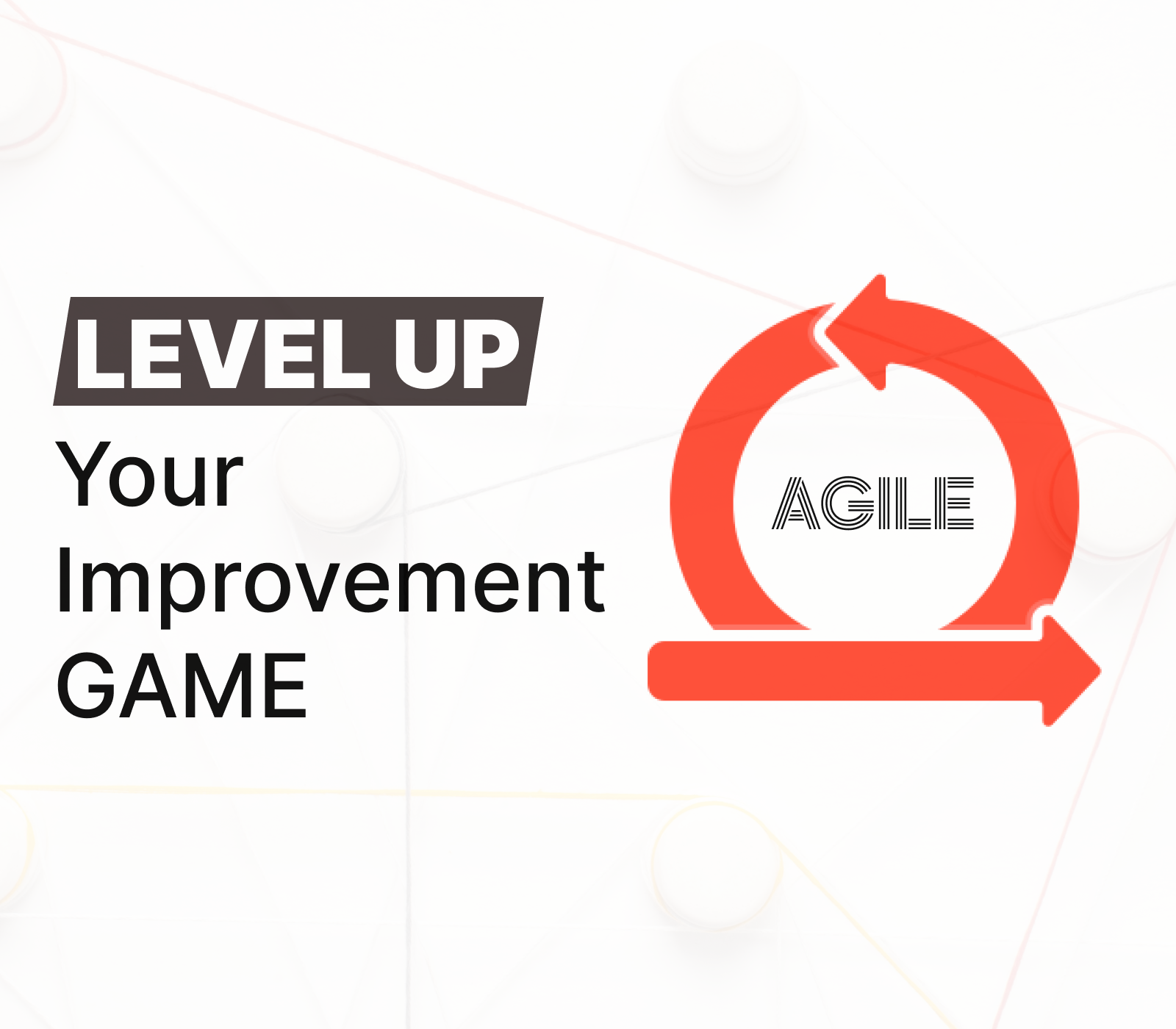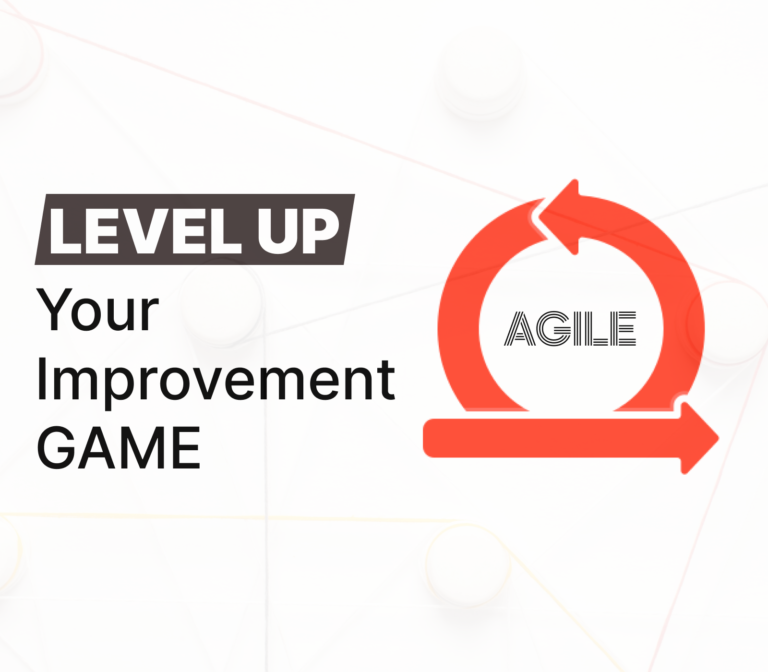Agile methodology has become renowned recently as businesses seek seamless improvement and the ability to adapt instantly to changing market conditions. Implementing agile practices can enhance management procedures and encourage a culture of collaboration and flexibility. In this blog, we will elucidate the key principles of Agile, its advantages, and steps in successfully implementing Agile.
Agile is an iterative and incremental approach to project management that focuses on adaptability, flexibility, and improvement. Unlike conventional waterfall methodology, where projects are taken forward in sequential stages, agile focuses on small and cross-functional teams to deliver working software and get feedback, permitting seamless improvement during the project cycle.
Agile Frameworks in Action:
There are numerous frameworks that teams could select to implement like Kanban, Scrum, or Lean, Each methodology has its own rules and regulations that assist teams in effectively managing their work. For instance, in the Scrum framework, the teams have daily stand-up meetings to discuss performance and any problems they might face. On the contrary, Kanban visualizes work on a board, permitting teams to see the streamlining of task flows and assess delays.
Advantages of Agile in Business:
Implementing agile in a business setting provides numerous advantages that support persistent improvement. These involve enhanced transparency and visibility into the project performance, flexibility in modifying requirements, and stakeholder engagement and customer satisfaction. By integrating these benefits, companies can minimize development cycles, reduce costs, and provide quality services or products. In addition to this, the agile methodology also encourages a collaborative work ambiance, where all the team members take stewardship of their work and make decisions accordingly. This not only enhances the sense of ownership and responsibility but also enables teams to tap into the diverse skills and views of each team member.
Scaling Agile Across the Enterprise:
Scaling agile enables companies to stay ahead of the trend by responding instantly to customers’ requirements and delivering the best experiences to keep the customer attracted. It means spreading agile working to every team at every level and department involving top management and minimizing coordination and control. The range in scaled agile frameworks, the structure and practices they promote and the particular problems they address differ. It depends entirely on the stage of your agile venture and how the framework is maintained to achieve your scaling goals.
This is crucial as there is so much more to do than adopt a framework.
- Challenges in Scaling Agile:
A framework assists you disregard creating the wheel concerning the structure, procedures and factors needed to adopt agility. But the real deal is an agile transition is completely different. If you wish to become agile, it means keeping a mindset and culture that prefers trust and collaboration over rules.
This means:
- Decentralizing decisions.
- Prioritises transparency and alignment around strategic objectives and how you plan work.
- Keeping a balance between teams.
- Modifying everything virtually in a way to organize the work.
- Delivering the best product results.
- Connecting with your customers throughout the business.
- Replacing, adopting, and updating your information systems to keep the information transparent.
Scaled Agile Framework (SAFe):
It combines lean, agile, and DevOps practices for business agility as it gives proper guidance on three levels for the delivery of the product in a scaled agile ambience and includes suggestions on widening agile across your business with its fourth portfolio level. Numerous agile practitioners consider SAFe extremely hard as it includes some difficulties and needs significant investment and commitment to implement. On the other hand, for the bigger companies this could surely be an advantage.
SAFe, a methodology for scaling agile practices, provides practical direction without requiring major modifications to the structure of the company. One prime tool is Planning, a quarterly event that integrates teams and departments with strategic motives for the next months. It also assists assess dependencies between teams and directs work to achieve PI efficiency.
- At the team level, SAFe is Scrum plus various XP (extreme programming) practices. Teams could select to use some Kanban practices to arrange their workflow.
- The program level organizes team efforts with quarterly program increment planning (PI Planning), and a team of teams known as the agile release train (ART), release train engineer, as a servant leader, and trainer would provide facility to the ART events.
- If you have a product that has more than 150 people working on it, so SAFe includes a solution that trains to manage different ARTs and a solution train engineer whose job is very similar to the RTEs but at an integrated level.
With the help of SAFe, teams will be able to follow Kanban or Scrum. However, the Kanban methodology explained in SAFe focuses on standard practices: visualizing work on a proper board, setting up a maximum number of tasks, and managing workflow. Since these teams are part of a larger SAFe methodology, they are supposed to follow extra rules and regulations. SAFe imposes some conditions on Kanban teams to plan together, demo together, and learn together.
The Kanban teams conventionally spend little time estimating tasks as they like to break down complex tasks into smaller ones and work on them persistently without hassle. Additionally, when working in Program Increment (PI) planning within the Scaled Agile Framework (SAFe) environment, these teams aim to calculate their workload relative to their capacity. This assists them support the larger tasks that require more people. To have exact forecasting, Kanban teams also need to comprehend their velocity which is how much work they can do in a particular time. The velocity must be persistent with other teams and the overall velocity of the agile release train (ART).
Large Scale Scrum (LeSS):
It is a framework for scaling agile product delivery and the thought driving everything in large-scale scrum is to be you:
- Do more with minimum
- Disregard overhead and local optimizations
- Incorporate a whole product focus by managing teams to provide customers with quality
Similar to Scrum-based methodologies, LeSS is a scaled-up version of single-team scrum with some adaptations. The conventional scrum agile methodology is a software development approach that divides work into teams. Every team has a responsibility to work on a few projects simultaneously. As every team works on a few projects at a time, in short-term increments known as sprints. However, the scrum methodology was made for small individual teams. Scrum can also be applied by a company to prioritize frameworks for larger groups of product teams working together seamlessly. The best way to use this methodology is known as large-scale scrum (LeSS). This method could work out for all those companies that have cross-functional teams.
Nexus:
Nexus is a methodology for scaled agile product delivery. It aims to minimize complexity and cross-team dependencies while allowing for modifications in procedures, product structure, and way of communication. This framework presents Nexus into a group of 3 to 9 scrum teams, each with a single product owner and a single product backlog. A nexus integration team and cross-team refinement are introduced to rationalize collaboration and arrange the dependencies among the teams.
The team also deals with integration problems that can hinder the Nexus from providing an integrated product increment. It includes the product owner, a scrum master and members from the development teams.
Additional Adaptations for Single-Team Scrum Events:
- Nexus sprint planning to manage the workflow of all the teams
- Nexus daily scrum to every team’s daily scrum to keep tabs on dependencies and integration problems.
- The review changes the individual team’s sprint reviews.
- A collaborative review of how teams, procedures, and equipment performed during the sprint.
Maintaining Team Motivation:
Agile teams always excel in collective information and skills. Fostering team interactions could lead to a great understanding and more groundbreaking solutions. Strategies that are involved in this process are:
- Arranging the workshop sessions for a better understanding of everything
- Creating a shared digital space for information repositories.
- Fostering pair programming or cross-team collaborations on particular tasks.
A culture that gives complete attention to experimentation and innovation is key to seamless improvement. This includes:
- Developing a safe ambiance for testing new ideas without the fear or doubt of failure
- Implementation of short and focused ideas to try out new methods and technologies.
- Celebrating successes and constructive failures as growth opportunities
Technical Debt in Agile:
Technical debt is the additional development work that comes when code that is easy to implement is used instead of applying a comprehensive solution. It is a mainstream issue in Agile software development procedures due to its impact on velocity and the load it places on many Agile teams. Technical debt could be taken as a shortcut in software development. It gives you the facility to choose a quick solution, but the problematic thing is that it might trouble you later. Taking shortcuts while developing software can create technical debt.
This means that you will have to put in extra effort shortly, due to the quick decisions made earlier. Therefore, tasks should be executed at the right time. Also, keep in mind that not every technical debit is necessarily bad. Often, it is mandatory to take on a sufficient debit to meet essential deliverables or timelines. The important thing here is to manage the debt effectively and disregard increasing it.
Final Thoughts:
Scaling agile could be daunting, but every scaled agile methodology and way is made to assist you in your venture. Encouraging a culture of continuous improvement in an agile team is all about following a set of practices and promoting a perspective of ongoing learning, collaboration, and flexibility. By adopting these strategies, teams make their work and procedures better and contribute to a more vigorous, creative, and effective work ambiance.




